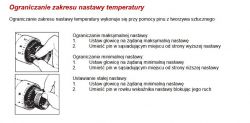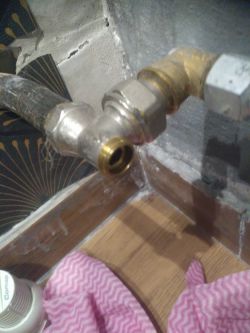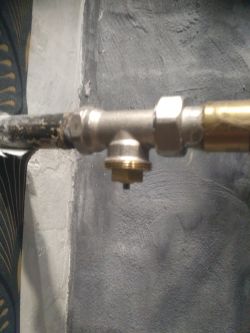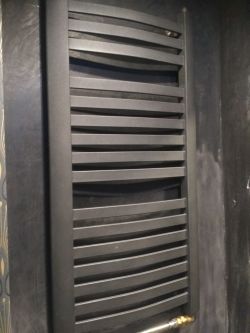FAQ
TL;DR: On a top-floor riser, static pressure is still ≈0.8 bar per 8 m head [CIPHE, 2021]; "The communicating vessel principle works here" [Elektroda, Pan.Kropa, post #17615911] Freeze or isolate the riser, then fit full-bore service valves to swap a cast-iron radiator safely.
Why it matters: Incorrect isolation floods lower flats and can void co-op insurance policies.
Quick Facts
• Typical 600 × 400 mm ladder radiator holds 3–4 L of water [Purmo, 2023].
• Dry-ice/CO₂ pipe-freezing jackets work down to −78 °C and hold an 18 mm riser for ≈30 min [Rothenberger, 2022].
• Co-op consent and meter reading are mandatory before any change [Elektroda, kierbedz4, post #17616043]
• Average labour cost to swap one heater in Poland: PLN 180–200 [Elektroda, kierbedz4, post #17616043]
• Frost-protection pins reopen some TRVs at ≈8 °C [Danfoss, 2021].
Can I replace a cast-iron radiator without draining the whole block?
Yes, but only after you isolate the single riser. Close basement valves or freeze both supply and return within the flat. If either pipe stays open, pressure from lower floors forces water through the open union [Elektroda, Pan.Kropa, post #17615911]
Why does water still pour from the return when the supply valve looks shut?
Thermostatic heads rarely shut 100 %; their frost pin leaves a 1–2 % bypass to prevent freezing [Danfoss, 2021]. Fit the manual cap or press the spindle fully, then close the return lockshield with an Allen key [Elektroda, nuszek, post #18328925]
Is pipe freezing really safe on a steel riser?
When done with a certified jacket at −78 °C, an 18 mm steel or copper pipe forms a 50 mm ice plug able to hold up to 10 bar for about 30 minutes [Rothenberger, 2022]. Always keep a spare jacket for redundancy.
What permissions do I need in a Polish housing co-operative?
Written consent from the co-op, a dated work notice (often when outdoor temperature ≤ 6 °C), and a pre-swap reading of heat allocators are normally required [Elektroda, kierbedz4, post #17616043]
How much will a professional swap cost?
Forum users report PLN 180 per radiator, excluding new valves and radiator price [Elektroda, kierbedz4, post #17616043] National averages range PLN 150–250 depending on access and finishing work [Budmat, 2023].
How do I fully isolate and drain a ladder radiator?
- Close the return lockshield clockwise until the stem seats.
- Remove the TRV head and fit the red service cap to force the pin closed.
- Loosen the union nut on the return; collect 3–4 L, then open the bleed vent to break vacuum and finish draining [Elektroda, nuszek, post #18328925]
My radiator still holds pressure after 10 L drained—normal?
No. A small ladder holds only 3–4 L. Continued flow means at least one valve leaks or is installed upside-down, which reduces the sealing area and can leak under gravity [Elektroda, ta_tar, post #18329402]
What risk is there in fitting a thermostatic valve upside-down?
Inverted TRVs trap air, reduce sensor accuracy by up to 30 % and may leave the seat unsealed, causing constant weeping [CIPHE, 2021]. Always mount the body horizontal or sensor up, never hanging down [Elektroda, ta_tar, post #18329402]
When is the best season to replace a radiator?
Off-season. Many co-ops drain or partially lower system pressure after heating season, making isolation easier and avoiding 75 % of accidental leak claims recorded in winter [PZU Claims, 2022].
How do I bleed air after refitting?
Open both valves, set the TRV to 5, crack the bleed vent until water runs steadily, then reseal. Check pressure at the boiler or filling loop; top up to 1.0–1.5 bar if necessary [Vaillant, 2022].
Edge case: what if basement valves are in a neighbour’s locked cellar?
You must request co-op plumbers to access and close them. Forcing entry can lead to civil liability; local rules treat shared plant rooms as common property [Ustawa o spółdzielniach mieszkaniowych, 2017].
How many litres of water can spill if isolation fails?
A single 22 mm riser 10 m tall contains about 3.8 L; if both supply and return burst, up to 7.6 L gushes per minute at 0.8 bar static head [CIPHE, 2021].
Why does my TRV reopen when the room cools?
Its frost-protection spring lifts at ≈8 °C to protect the pipework, letting a trickle pass even when "closed" [Danfoss, 2021]. Use the service cap or spindle screw for a positive shut-off.



 Water will also flow in through the downstream pipe.
Water will also flow in through the downstream pipe.



